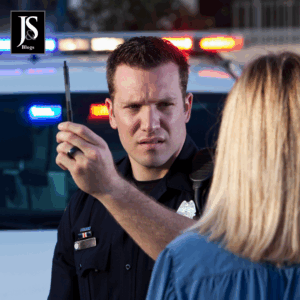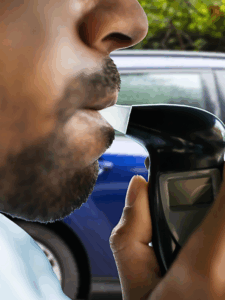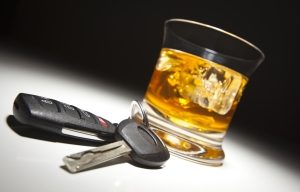
Drive Sober or Get Pulled Over is a national campaign that spans from August 13th to September 1st. Operating a vehicle in Georgia with an alcohol limit of more than 0.08% within hours after driving is illegal and can result in legal consequences for driving under the influence (DUI). O.C.G.A § 40-6-39(a)(5)
At Jones & Swanson, safety is one of our top priorities. We believe being proactive is key and we are committed to ensuring everyone is driving safe this season.
WHAT IS THE DRIVE SOBER GET PULLED OVER CAMPAIGN?
The Drive Sober, Get Pulled Over campaign is a national movement that runs from mid-August to Labor Day and raises awareness to the consequences of driving under the influence. It is identified as a “national high visibility enforcement” campaign. Due to the high volume of impaired activity, at this time of the year, officers are on the look out for drivers under the influence; you will see a much higher police presence on your roads.
Jones & Swanson wants to make sure that you and your family are safe this month and can identify/prevent alcohol and drug-impaired driving.
WHAT IS THE LAW IN GEORGIA?
- Under the influence of alcohol to the extent that it is less safe for the person to drive;
- Under the influence of any drug to the extent that it is less safe for the person to drive;
- Under the intentional influence of any glue, aerosol, or other toxic vapor to the extent that it is less safe for the person to drive;
- Under the combined influence of any two or more of the substances specified in paragraphs (1) through (3) of this subsection to the extent that it is less safe for the person to drive;
- The person’s alcohol concentration is 0.08 grams or more at any time within three hours after such driving or being in actual physical control from alcohol consumed before such driving or being in actual physical control ended; or
- Subject to the provisions of subsection (b) of this Code section, there is any amount of marijuana or a controlled substance, as defined in Code Section 16-13-21, present in the person’s blood or urine, or both, including the metabolites and derivatives of each or both without regard to whether or not any alcohol is present in the person’s breath or blood.

WHAT ARE SOME WAYS TO PREVENT IMPAIRED DRIVING?
There are plenty of ways to prevent impaired driving. While abstaining from drugs and alcohol is the best way for prevention, this isn’t always the case. Jones & Swanson has a few ways of protecting yourself and others from impaired driving:
- Know your limits, pace yourself. The human body processes at one standard drink per hour. This can change based on your weight, sex, composition, and metabolism.
- If you know that you’re having more than one drink, plan a ride. Schedule an Uber, Lyft, or sober friend to pick you up.
- Take a break.
- Wait it out:
- Do not wait in your drivers seat with the car on or with your keys in reach.
- Instead, make sure that you car is off and that your keys are out of the ignition and out of reach.
- Call the Safe Ride America

WHAT IS SAFE RIDE AMERICA?
If you are ever worried that you and your car may not make it home safely, there is an affordable solution that can help! Safe Ride America is an Atlanta-based, non-profit rideshare business that provides services that take care of you and your vehicle when you’re unable to drive.
Like the Drive Sober Get Pulled Over Campaign, it encourages the importance of road safety. They offer several specialized services that provide rentals, assigned drivers, and event services to get the job done. They are affordable and accessible for anyone in need.
WHAT ARE THE SIGNS OF AN IMPAIRED DRIVER?
Your mental state under the influence can heavily impact your driving on the road. If your mental state or surroundings are not right when driving, you have the ability of putting yourself and others at risk.
On the road, there are several ways to spot a impaired driver:
- Swerving
- Speeding or aggressive driving
- Super slow or cautious driving
- Ignoring road signs or safety
- Tailgating
- Frequent breaking
These aren’t the only ways to spot them. That’s why it is important to stay aware and be vigilant of your surroundings. Don’t forgot to report any suspicious/concerning behavior around you to 911.
FREQUENTLY ASKED QUESTIONS
Q1: What happens if I get caught driving drunk or high for the first time?
Answer: If you are caught driving impaired by drinking or drugs and it is your first offense, you can experience the following:
- Possible jail time up to one year
- Fines of $300 minimum and up to $1,000
- Suspended license for up to one year
- Minimum of 40 hours of community service
- $210 license reinstatement fee
Q2: How do the use of drugs affect my driving?
Answer: All driving requires a driver’s undivided attention, quick reaction time, and heightened ability to focus. When impaired, your brain does not function at it’s fullest capacity.
When operating any vehicle, the driver should not be experiencing any of the following:
- Drowsiness
- Leisurely coordination
- Spiraling risk-taking
- Harmful judgment
Q3: What are field sobriety tests and when do they happen?
Answer: If you are driving while impaired and get pulled over by a police officer, they will more than likely offer to give you a field sobriety test. A field sobriety test is a roadside test that police officers use to determine if a driver may be impaired.
Field Sobriety tests normally come in three parts:
-
Horizontal Gaze Nystagmus
Horizontal Gaze Nystagmus, or HGN, is a test where an officer uses an object (normally, a regular sized pen) and moves it side to side in front of your eyes. The object is moved either side to side or up and down at different paces to test the drivers vision. Officers use this test to examine the drivers eyes to find involuntary eye jerking. This twitching movement is more pronounced when alcohol is involved. -
Walk-and-Turn
At the Walk-And-Turn portion of the test, the police officer will carefully explain to the driver what will be happening during the test. The driver will start off by walking heel-to-toe on an imaginary line on the ground. Commonly, the officer will asks you to walk nine steps, pivot 365 degrees, and then walk back to where you started. The point of this test is for officers to see if the driver will lose their balance, step off the line, or use their arms for support. -
One-Leg Stand (OLS)
The One-Leg Stand is a test used when a driver has a blood alcohol content level of over 0.10 or higher. During the One-Leg Stand exam, the driver will raise one leg (6 inches above the ground). This exam lasts for about 30 seconds period. Officers will looks at four things when this test is taking place: hopping, collapsing, wobbling, or forfeiting/putting their foot down.
We hope that everyone has an enjoyable fall season, and remembers to practice defensive driving for these changing weather seasons. Jones & Swanson cares about your safety and is dedicated to making sure we spread awareness for safe and proactive driving throughout our communities.
IF YOU OR SOMEONE YOU KNOW HAS BEEN IN A BUS-RELATED ACCIDENT, SEEK IMMEDIATE MEDICAL ASSISTANCE AND THEN GIVE US A CALL AT (770) 427-5498 OR CONTACT US ON AWJLAW.COM FOR A FREE CONSULTATION TO FIND OUT THE NEXT STEPS YOU MAY WANT TO TAKE.
Categories: Car Accident, Distracted Driving, Drunk Driving, FAQ, Georgia Laws, Safety Tips





